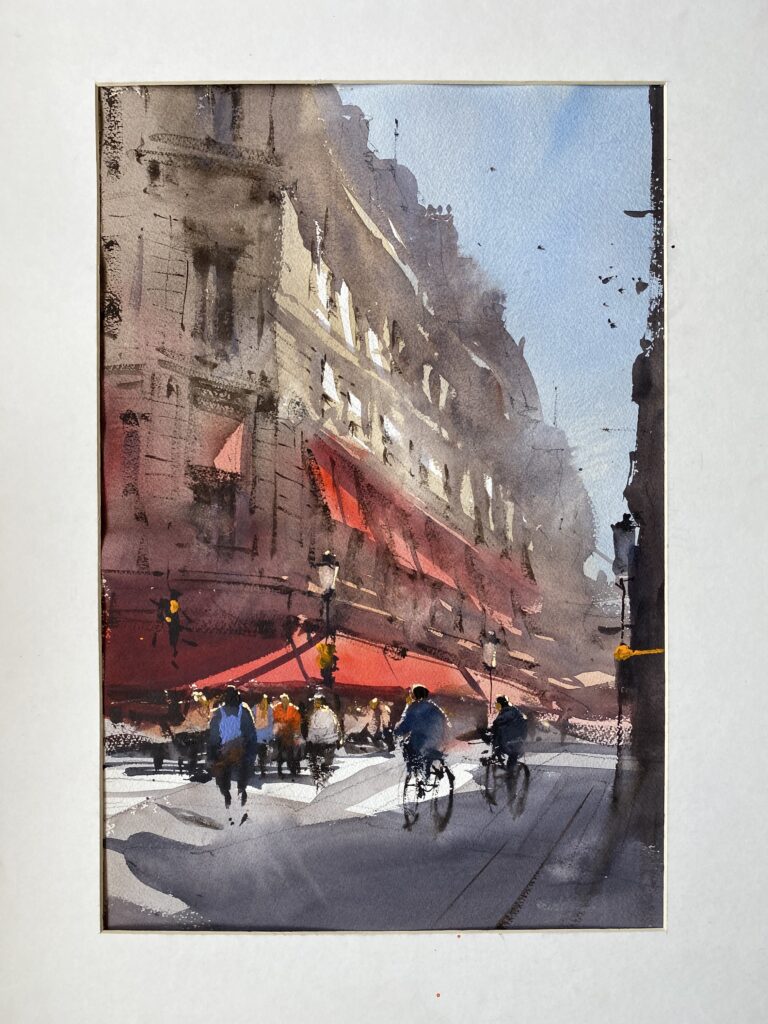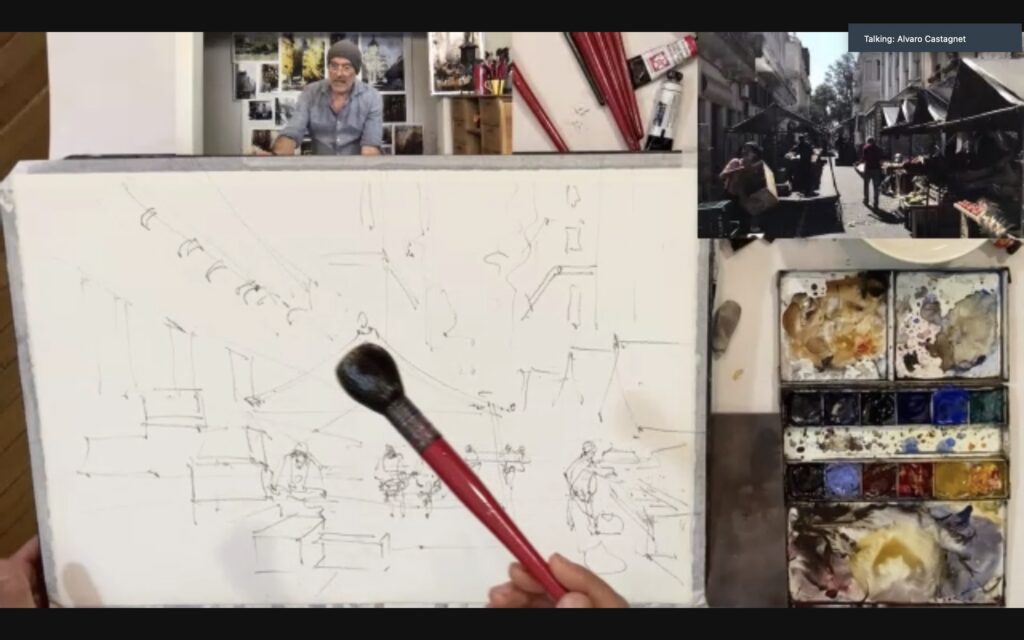At the beginning of November 2022 I found a notice about an online workshop with Alvaro Castagnet. It cost only $99 and you would get to paint online with Alvaro for four hours. He would start at 5 in the afternoon in Australia which meant starting at nine for me, and going until one in the morning, okay, a bit late for me, but it would work.

A few days before the workshop, we received two photographs, this so that we could sketch the two motifs first. It’s good, but can sometimes be a bit tricky because it’s important where you place the different objects in the image. You have to think through where you place everything, often the photographs are not good and the great thing about painting is that you can do a little how you want.
Look next to the first picture we were going to paint. The cyclist is moving out of the picture, that’s not good. It also leads the viewer out of the image and we want the viewer to stay and look at our image, not jump to another image or disappear in other ways. Another person, on the right of the picture, is right on the edge, not so well either. The shape of the shadow is not nice, but there are a lot of exciting things to paint in the picture, the red awnings, the balconies, the crosswalk and all the people gathered on the sidewalk. It will be exciting to see how Alvaro will solve this.
Alvaro spoke first, as usual a long monologue. Then got then he is sketched. You could easily see everything because the picture showed his paper, his palette, the model and even himself in one corner, very well.

Check out the sketch. Alvaro moved the cyclist, also placed another next to it. He moved the lantern to the right and he removed the person who was on the edge of the crosswalk. He has also “pulled down” the pedestrian crossing so that there is a bit more perspective in the picture. Very good!

Then on with paint, it mostly flies together but left some white on some places, some windows, two people and the crosswalk. Let dry.

The red color from the awnings has spread over the house, very well. Check out the perspective of the buildings, it’s not a straight line, it curves down a bit instead of forming a long point, very neat. The shadow has a different shape and one person has been given a blue vest.

The second picture that Alvaro painted was the one below and here you can also see what you can improve before you start painting. The guy with the cap on the left is way too close, too big. He will become a strong eye catcher which will not work so well. The awnings on the right repeat themselves, four next to the same shape, and usually don’t turn out very well either. But it’s exciting to first figure out how you should do it, and then see how a master would do it.


Here you see Alvaro’s sketch. The person with the hat is reduced, the perspective is not as strong in general. The awnings are smaller and the repetition is barely visible. What is far away is magnified.

After painting for a while it looked like this. Lots of boxes on the left.

When Alvaro has finished painting, you can really see how a master worked on the problem. You can clearly see what everything represents, that’s important. The photograph is a bit diffuse, but here you can see boxes, awnings and the people clearly. The man with the white cap stands out, but not nearly as much as in the photograph. Note again that the people in the foreground are reduced and the background enlarged.

My picture became more mushy, more unclear, you can’t see what I painted. In addition, I have done too much and too sharp details on the buildings, it was too much.
But I can highly recommend Alvaro’s online workshops. He instructs well and comments on your pictures if you want. You simply have to hold up your painting in front of the cameras. When I showed him this, he thought it didn’t go well with the awnings on the right, they repeated themselves. But he liked the vegetables and boxes on the left of the picture.
So join these online watercolor adventures, it’s fun and learning.
Gadnell's Watercolor Newsletter
In my newsletter, sent out no more than six times a year, you’ll receive:
- Early updates about upcoming courses
- Priority access to new artworks
- Inspiring tips and useful insights into watercolor painting
It’s completely free, and you can unsubscribe at any time.
I warmly welcome you to join the newsletter!
Best regards,
Stefan

